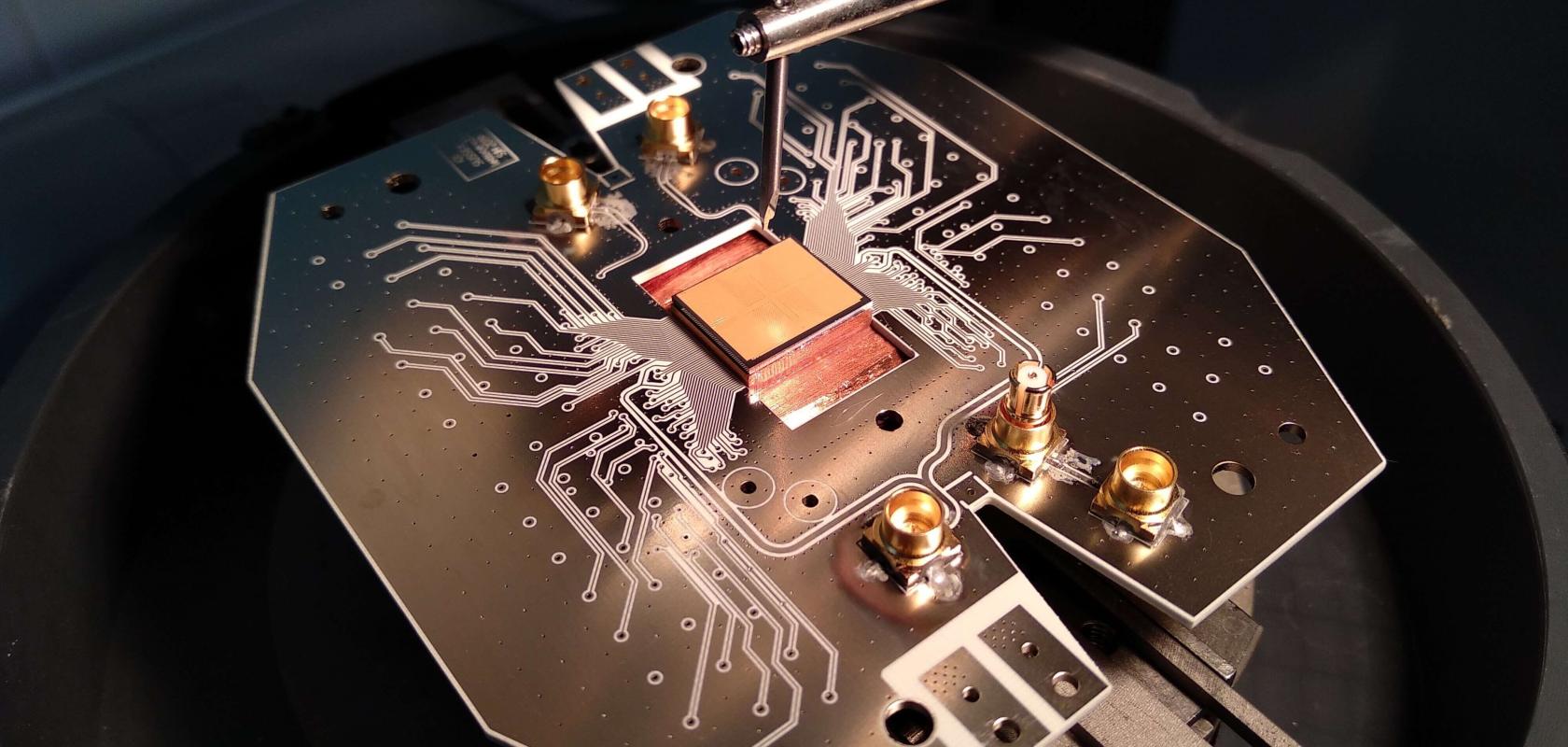New research by Universal Quantum has determined how a quantum computer could break the encryption of Bitcoin and simulate a crucial molecule in the fight against global food shortages and climate change.
The research, undertaken by Universal Quantum, University of Sussex and Qu&Co, was published today in an Editor's Choice paper in AVS Quantum Science. The paper demonstrates that a quantum computer with 13 million physical qubits could break Bitcoin encryption within a day; and it would take a 300 million qubit computer to break it within an hour. There has also been considerable progress in reducing the physical size of quantum computers.
Mark Webber, quantum architect at Universal Quantum and the paper’s lead author, who embarked on the research whilst studying for a PhD at the University of Sussex comments: ‘Four years ago, we estimated that a trapped ion quantum computer would need a billion physical qubits to break RSA encryption, which is the standard method of encrypting communication today, equating to a size 100m2. With innovations across the board, the size of the computer would now just need to be 2.5m2.’
‘State-of-the-art quantum computers today only have 50-100 qubits,’ Webber continues. ‘Our estimated requirement of 13-300 million physical qubits suggests Bitcoin should be considered safe from a quantum attack for now, but quantum computing technologies are scaling quickly with regular breakthroughs affecting such estimates and making them a very possible scenario within the next 10 years.’
Quantum computers are exponentially more powerful at breaking many encryption techniques than classical computers. While today's largest supercomputer could never pose a serious threat, current encryption methods will one day be vulnerable to a quantum computing attack. That includes Bitcoin’s encryption and more widespread techniques such as RSA encryption.
Tackling the world food shortage and saving energy
The scientists also focused their research on the potential of quantum computers to play a key part in tackling hunger and climate issues through testing the simulation of the FeMoco molecule, which is responsible for biological nitrogen fixation and a common object of research in quantum computing. The FeMoco molecule is important for converting nitrogen in the air into ammonia, which could then be used for fertilizers.
‘We are currently spending around 2 per cent of the world energy supply on just this process, so a better understanding of the FeMoco molecule could greatly improve efficiency in this field with an immensely positive impact on world food scarcity and the climate crisis. But these two use cases are the tip of the iceberg, we’re only just starting to understand the impact on society for reaching quantum advantage,’ added Webber.
Achieving quantum advantage
Quantum advantage is a major milestone within the quantum computing community. Once achieved, it shows an industrially relevant computational problem solved in a reasonable timeframe that would be practically impossible to do using any classical supercomputer. The two use cases tested by the researchers are examples of quantum advantage which is no longer a distant future vision but likely to become a reality within the next 10 years.
When looking at use cases, the researchers made a surprising discovery. You may assume that the speed at which a quantum computer carries out individual operations, the clock speed, solely determines the time a quantum computer requires to solve a particular problem. However, the researchers found that increasing the number of qubits inside the quantum computer can actually compensate for a slower clock speed. This discovery may play an important role in helping to decide what is the most suitable hardware platform to build quantum computers capable to tackle important practical applications1.
There are many ways to make a quantum computer and certain hardware specifications may affect these estimates. Universal Quantum’s computer, for example, uses vastly enhanced connectivity where trapped ions form qubits that are free to move and essentially ‘talk’ to thousands of other qubits. Compared to superconducting machines where the qubits cannot move, so can only talk to a handful of other qubits, this could have a significant effect on the number of qubits required to reach quantum advantage.
Co-founder and chief scientist at Universal Quantum and University of Sussex Professor of Quantum Technologies Professor Winfried Hensinger explains some of the real-world applications driving their research: ‘Simulating molecules has applications for energy efficiency, batteries, improved catalysts, new materials, and the development of new medicines. Further applications exist across the board— including for finance, big data analysis, fluid flow for airplane designs and logistical optimisations.’
‘One of our focuses at Universal Quantum has been on how we can reduce the required size and processing timeframes of a quantum computer to that which is practical for real-world use, whilst having a processing power that is capable of solving some of the most pressing global issues,’ Hensinger continued. ‘It’s enormously encouraging to see that in these important test cases we’ve reduced the estimated number of physical qubits that a quantum computer would need to be for quantum advantage, and therefore the size from that of the size of a football pitch to mere metres.’
The research was undertaken by scientists from Universal Quantum, the University of Sussex and quantum algorithm and software developers, Qu&Co and published as an Editor's Choice paper in AVS Quantum Science from the American Institute of Physics. It involved creating a tool that automates the calculation of how big a quantum computer needs to be to solve important problems as a function of how long the algorithm is, the desired run time, and key hardware specifications like qubit quality and operation rate.


